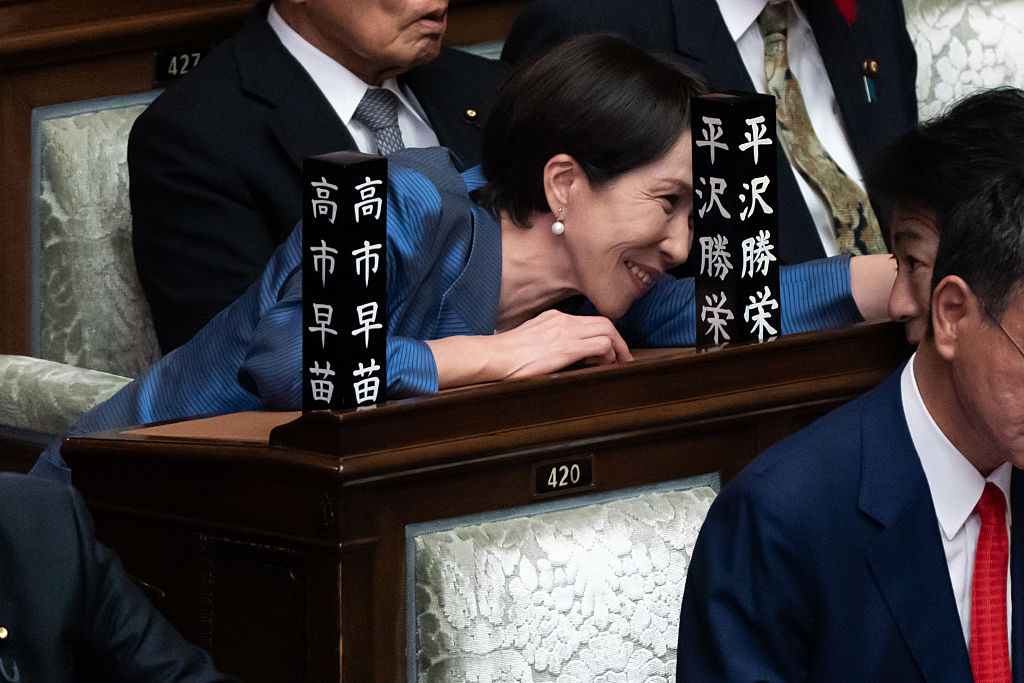Liberal Democratic Party (LDP) President Sanae Takaichi attends a plenary session in the lower house of the Diet, in Tokyo, Japan, on Oct. 21, 2025.
Credit – Tomohiro Ohsumi—Getty Images
Despite a rocky ascent, hardline conservative Sanae Takaichi was elected Prime Minister by Japan’s parliament on Tuesday, making her the East Asian country’s first woman to hold the country’s top office.
Takaichi, 64, who leads the ruling Liberal Democratic Party (LDP), won 237 of 465 votes in the lower chamber of the National Diet, Japan’s parliament, defeating opposition candidate Yoshihiko Noda. In the upper chamber, Takaichi fell one seat short of a majority in a first-round vote but ultimately won in a runoff against Noda.
The Diet convened for an extraordinary session to elect Takaichi, who took over after Prime Minister Shigeru Ishiba resigned with his cabinet earlier in the morning.
While the LDP has dominated Japan’s government for decades, and its party president has historically been a shoo-in for the premiership, a series of scandals in recent years has diminished public support for the party. Parliamentary election losses led to Ishiba’s resignation in September.
Takaichi won the party leadership contest on Oct. 4, signaling a shift to the right for the traditionally center-right party, but her assumption of the premiership was upset by the departure of the LDP’s longtime coalition partner of 26 years, Komeito, leaving the LDP’s future in power uncertain. The LDP holds a plurality, but short of a majority, of legislative seats.
On Monday, however, Takaichi secured the votes she needed by embracing the libertarian Nippon Ishin no Kai (Japan Innovation Party), which formally signed a coalition agreement with the LDP.
Ishin currently has 54 seats in both chambers of Parliament compared to Komeito’s 43, leaving the LDP’s new coalition with 351 seats.
Former Ishin leader Noboyuki Baba described their party in 2023 as “the second LDP” —and there are some similarities between their policies. The party, which was formed in 2010, shares Takaichi’s hardline approach to national security and immigration, in contrast with Komeito’s more pacifist restraint. The LDP and Ishin also both support an increase in the country’s defense spending and revisions to the Japanese constitution to allow the maintenance of military forces. Takaichi told reporters Monday that both parties share “many common views” and are “essentially heading in the same direction.”
But the coalition’s stability is another question. Ishin, unlike Komeito, is not taking any ministerial seats in Takaichi’s cabinet, at least for now.
Jeff Kingston, a professor of Asian studies at Temple University’s Tokyo campus, tells TIME that this means “if things don’t work out the way Ishin hopes, then they can walk away.”
Kingston also adds that Takaichi’s failure to keep Komeito in the coalition will have reputational effects: “she emerges already a diminished leader,” he says, noting that while she has often embraced comparisons to her mentor, the late Shinzo Abe, “she doesn’t really have the stature” that he had in Japanese politics.
Stephen Nagy, a visiting fellow with the Japan Institute for International Affairs, tells TIME that the stability of Takaichi’s government will depend on her success in managing relations with U.S. President Donald Trump as well as how strongly she sticks to some of her most controversial domestic ideological positions.
“My only worry,” Nagy says, “is that she’ll slip up on ideological, short-term gains, instead of focusing on pragmatic, long-term gains that can really make her have the kind of longevity that Prime Ministers need to have effective policy.”
Contact us at letters@time.com.

